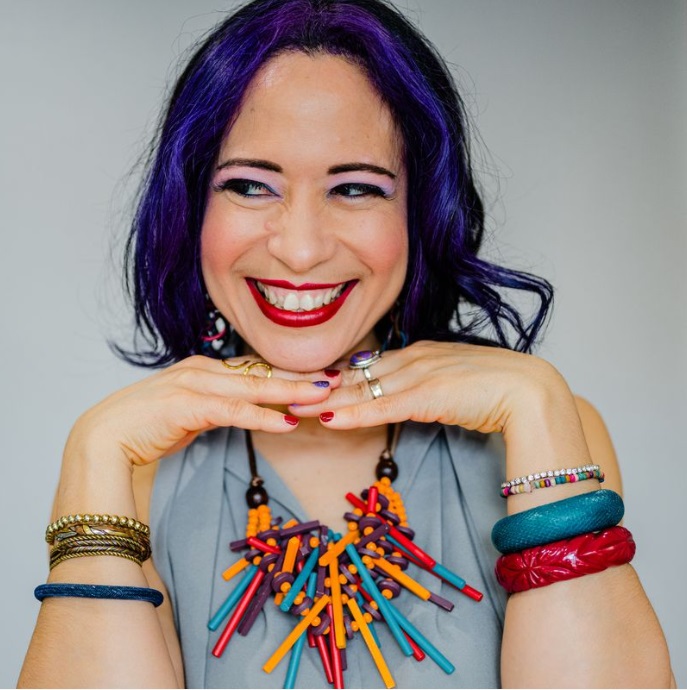
Lucy Kalantari is a renowned recording artist.
1. Why are you an artist?
Children’s media has played a significant role in my life ever since I was young. It left a lasting impression and provided me with invaluable gifts that have shaped who I am today. Creating music for children allows me to continue this tradition, offering the same kind of impactful experiences that inspired me. I aim to plant seeds for growth in children, with a focus on joy, community, and resilience.
2. What are you working on now?
I recently released a new children’s album in Spanish called Creciendo. Being of Dominican and Puerto Rican descent (and having grown up in the Dominican Republic!), I’m thrilled to finally offer an album for Spanish-speaking families, as well as for families looking to incorporate more Spanish language and sounds into their lives. This album explores the beautiful and fascinating journey of growing up.
3. What were your favorite children’s books to read when you were a child?
The Monster at the End of This Book: Starring Lovable, Furry Old Grover by Jon Stone.
As a child, I spent so much time pouring over the detailed images of Grover’s growing frustration about the reader turning each page, getting closer to the end of the book…which, obviously, is where the “monster” is. It was both hilarious and fascinating. But in the end, all of that panic, anger and frustration Grover expressed, was for nothing. There was nothing to be afraid of.
4. What contemporary children’s books/music do you recommend?
I highly recommend the How to Train Your Dragon book series by Cressida Cowell. It’s a wonderful and hilarious coming-of-age story that follows the unlikely hero, Hiccup Horrendous Haddock III.
While the movies are fun, the books are filled with depth and substance that are especially meaningful for children as they grow up. Additionally, Andrew & Polly’s album Ahhhhh! is another fantastic musical companion for children during the journey of growing up.
5. Why is diverse representation in children’s media important?
Children need to see that diversity is normal. This world is such an incredible mixture of colors, cultures and flavors, and depriving our children of what that looks like would give a limited view. Also, seeing themselves reflected in characters is a gift that will last a lifetime.
6. How can educators use children’s media to teach empathy, kindness, and tolerance?
The most effective way to teach empathy, kindness, and tolerance is by modeling these behaviors. Media that demonstrates these traits is critical in reinforcing them.
Conversely, media that depicts undesirable behaviors can inadvertently emphasize those traits. Therefore, it’s important to avoid exposing children to media that celebrates negative behaviors.
Children will eventually learn to distinguish between acting and real life, but it’s crucial to provide them with positive examples to emulate from the start.
7. Where may we find you online?
Album
Website
Instagram
Facebook